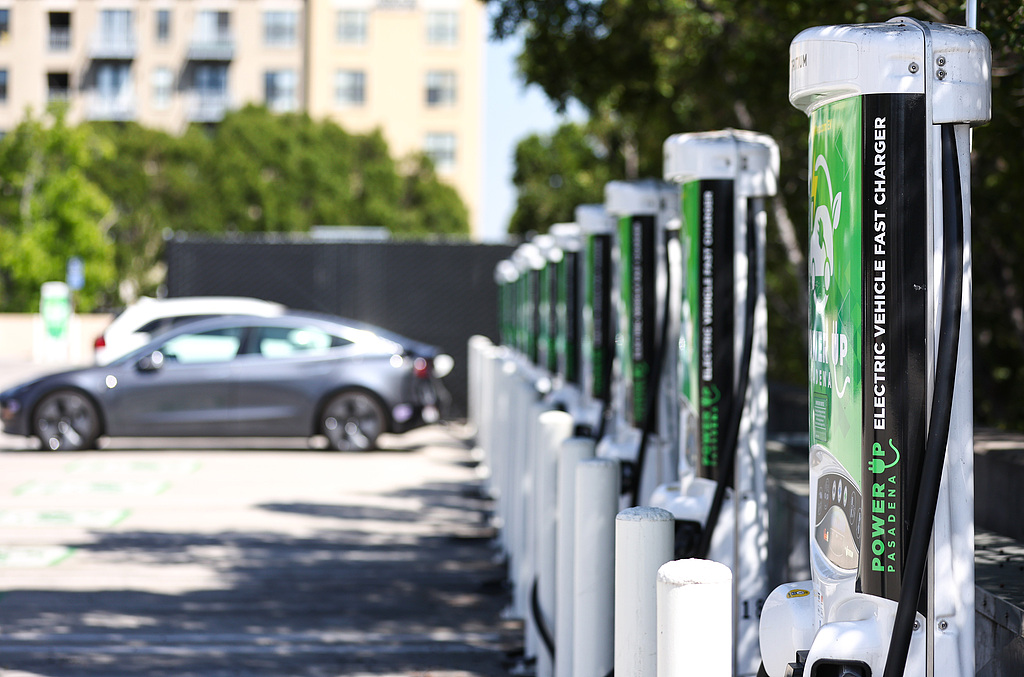Charging rollout lags US EV sales

Electric vehicle sales in the United States have soared by more than 140 percent since the start of 2023, but additional growth may be hindered by a far slower and more uneven rollout of public charging stations.
US registrations of EVs hit just more than 3.5 million as of September, according to the Alternative Fuels Data Center. That's up from 1.4 million registrations in 2023, and marks the steepest ever growth rate in EV uptake in the country.
However, installations of public EV charging stations have expanded by only 22 percent over the same period, to 176,032 units, AFDC data show.
That slower charging infrastructure rollout risks causing backlogs at charge points, and may dissuade potential buyers from making EV purchases if they expect uncertain wait times when needing to recharge their cars.
The 2 million or so rise in EV registrations seen since 2023 has taken place throughout the country, although roughly 70 percent occurred within the 10 largest EV-driving states.
Topped by California, Florida and Texas, that list also includes Washington state, New Jersey, New York, Illinois, Georgia, Colorado and Arizona.
Collectively, those 10 states boosted EV registrations by nearly 1.5 million to just over 2.5 million, AFDC data show.
California remains by far the largest EV market, with registrations climbing by nearly 700,000 to 1.25 million as of September.
The key to further EV growth will be determined by a slew of factors, including whether current purchasing incentives are carried over to the next US administration after the Nov 5 presidential election.
Those incentives play a key role in determining how competitive EVs remain relative to combustion-powered vehicles.
A Kamala Harris administration is expected to maintain EV incentives, while Donald Trump has pledged he may cut federal EV support if he regains office.
Of almost equal significance will be the span and density of public charging stations, which remain a critical factor for many would-be EV buyers.
The National Electric Vehicle Infrastructure program launched by the Biden administration is a key driver of charge point growth and provides public funding to states to deploy a network of strategically-located EV chargers.
The pace of charge point rollout has been far slower than anticipated, due to a number of factors including the difficulty of identifying and constructing suitable sites and the slow pace of utility connections to local grids.
Shortages of key charge station equipment and of qualified technicians and installation teams have also constrained the build-out pace.
As with EV registrations, 10 states account for a majority of the total 176,032 public EV chargers in place, and are home to just under 112,000 charge points.
In terms of the number of EV charging units, 32 states and districts have 1,000 or more public EV charge points in place as of September 2024, AFDC data show.
Of the remainder, 13 states have between 500 and 999 charge points, while West Virginia, Montana, Wyoming, South Dakota, North Dakota and Alaska are the only states with fewer than 500 public EV chargers.
Going forward, a majority of the growth in both EV sales and charge point installations is likely to remain in the largest EV-driving states.
But the strong growth pace in EV registrations across every state over the past year indicates widespread interest in EV ownership, even outside the traditional strongholds.
For that pace to be maintained, a denser charging network running coast to coast and including rural areas is required.
Reuters

